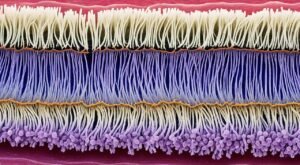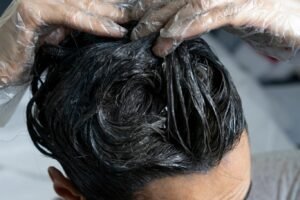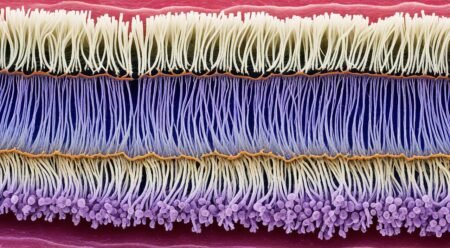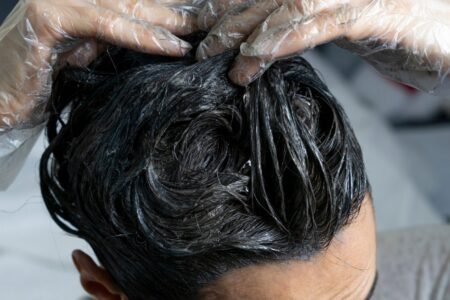“A woman who cuts her hair is about to change her life,” said the iconic Coco Chanel, a statement echoing the profound relationship between hair and self-perception for women. But what happens when cutting is no longer a choice but a necessity due to thinning or loss? That’s where the science and art of hair transplant for women enters – a beacon of hope for those seeking to reclaim not just strands, but confidence.
Your journey towards rejuvenation and empowerment begins with understanding the transformative potential of women’s hair loss treatment. The industry has been tirelessly innovating, programming every thread of technology into action, crafting solutions that promise more than growth; they sketch a pathway back to the self. With hair restoration for women, you’re not just regaining fullness, you’re welcoming a new morning, abundant with the promise of strength and vitality at the crown of your existence.
Understanding Hair Transplant for Women
If you’re exploring options for combating hair loss, hair transplant surgery for women may have surfaced as a promising solution. As a method to restore not just hair, but also confidence, it’s crucial to grasp both the scientific approach and the compatibility with unique conditions like female pattern baldness. Below, we delve deep into these aspects, providing you with a clearer picture of this procedure’s role in female pattern baldness treatment.
The Science Behind Hair Transplant Surgery for Women
Hair transplant science has advanced significantly over the years, offering groundbreaking techniques tailored specifically for women. A female hair transplant typically involves removing healthy hair follicles from a donor area and meticulously transplanting them to the affected sites. This precision ensures natural-looking results and, importantly, the promotion of future hair growth in areas once thinned by hair loss.
Compatibility of Hair Transplant Procedures with Female Pattern Baldness
For women facing female pattern baldness, a specific type of hair loss that typically leads to hair thinning rather than complete baldness, hair transplants can be particularly effective. The technique utilized needs to take into account the typical pattern of thinning – often around the part or the crown of the head – ensuring that the restored hair looks as natural as possible.
| Procedure Aspect | Importance for Women | Outcome |
|---|---|---|
| Donor Selection | Ensuring high-quality donor hair for better integration | Seamless, natural-looking volume where hair is thinning |
| Follicle Survival Rate | Maximizing the growth potential of transplanted hair | Sustained hair density and reduction of balding patches |
| Aesthetic Placement | Mimicking natural hair growth patterns and directions | Unnoticeable transition between original and transplanted hair |
Understanding the synergy between advanced hair transplant surgery for women and individual hair loss patterns is key. As these insights reveal, female pattern baldness can be effectively managed with the right transplantation strategy, offering not just a cosmetic overlay, but a deeper, long-term solution for hair regrowth and scalp health.
Exploring Women’s Hair Loss Treatment Options
When faced with hair loss, the journey toward hair regrowth for women can be filled with many choices. It’s essential to be well-informed about the range of treatments available, especially when considering the women’s hair transplant cost. For many, this cost is a significant deciding factor, but there are both surgical and non-surgical avenues to consider.
Non-surgical hair transplant for women has made advancements that offer hope without the need for invasive procedures. These options not only tend to be more cost-effective but also cater to those who prefer a less aggressive approach to hair regrowth. Let’s delve into these alternatives and help you understand what might be the best fit for your needs.
- Topical treatments such as minoxidil which can stimulate hair follicles through daily application.
- Low-Level Laser Therapy (LLLT) using specialized combs and helmets that emit light to enhance circulation and promote hair growth.
- Platelet-Rich Plasma (PRP) injections that use components of your blood to rejuvenate hair follicles and encourage new growth.
While these non-surgical methods provide an alternative, they can have varying results and may work best when combined with other treatments. It’s critical to have a comprehensive consultation with a professional to discuss the most effective strategy for your hair regrowth journey.
In contrast, surgical procedures, though often more costly, present a longer-term solution with their own set of benefits. Here’s a quick glance at what you might expect financially when considering a women’s hair transplant:
| Treatment Type | Estimated Cost | Duration of Results |
|---|---|---|
| FUE (Follicular Unit Extraction) | $4,000 – $15,000 | Permanent |
| FUT (Follicular Unit Transplantation) | $6,000 – $20,000 | Permanent |
| PRP Therapy | $1,500 – $3,500 (per session) | Variable |
The cost of these treatments can fluctuate based on the extent of the transplant, the surgeon’s experience, and the geographical location of the clinic. Furthermore, it is imperative to bear in mind that surgical options can offer permanent solutions and may ultimately be a worthwhile investment when looking at the long-term perspective.
You deserve to make a choice that aligns with your financial comfort, lifestyle, and personal goals for hair restoration. Armed with this knowledge on women’s hair transplant cost and the benefits of non-surgical hair transplant for women, you can make an empowered decision towards achieving lush, healthy hair.
Types of Hair Restoration for Women
When it comes to addressing hair loss, the technological advancements in the field have been nothing short of remarkable, particularly for women seeking effective solutions. Understanding the available hair restoration techniques is essential for making an informed decision. Two of the most widely recognized methods in hair transplant for women are the FUE method and FUT techniques. Each of these has unique benefits geared towards different needs.
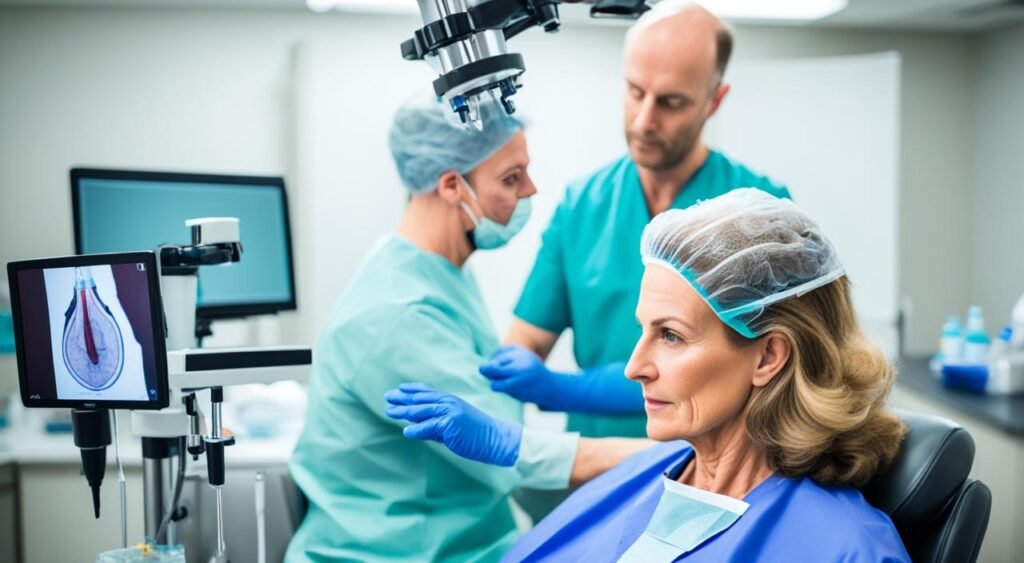
FUE (Follicular Unit Extraction) Method
The FUE method has become particularly popular due to its minimally invasive nature. In this procedure, individual hair follicles are extracted directly from the scalp and transplanted to the affected areas. It’s known for leaving no linear scars and for its shorter recovery time, allowing you to return to everyday life with minimal interruption. This method is especially appealing if you prefer to wear your hair short, as the scarring is less conspicuous.
FUT (Follicular Unit Transplantation) Techniques
In contrast, FUT techniques involve removing a small strip of tissue from the back of the scalp from which hair follicles are separated and then transplanted. This method is often favored for its ability to cover larger areas of loss in a single session. While it may leave a more notable scar compared to FUE, it can be easily concealed beneath the hair and offers a cost-effective solution for those looking to maximize the volume of transplanted hair.
Both FUE method and FUT techniques have transformed the approach to hair transplant for women, offering hope and confidence through enhanced aesthetic outcomes. As you continue to explore these options, remember that a consultation with a specialized professional is the best step forward to understanding which method will align perfectly with your personal hair restoration goals.
Hair Transplant Surgery for Women: The Process
Embarking on hair transplant surgery requires an understanding of the stages involved. Consulting with a female hair transplant specialist beforehand ensures that each step is tailored to your unique needs. Let’s walk through the journey of hair transplant surgery for women, step by step.
Preparation is key, as it sets the stage for a smooth process and optimal results. Upon deciding that a hair transplant is the right course of action, your chosen specialist will guide you through a bespoke pre-op regimen.
- Comprehensive Consultation
- Health Evaluation and Scalp Analysis
- Pre-Surgery Instructions
On the day of surgery, precision and care are paramount. At this stage, you’ll be in the capable hands of your specialist and their medical team, who will perform the procedure with meticulous attention to detail.
- Anesthesia and Comfort Measures
- Hair Follicle Harvesting
- Grafting and Placement
Post-surgery, focus shifts towards recovery and ensuring the best possible outcomes. Your specialist will provide you with a tailored aftercare plan, essential for fostering a conducive environment for hair growth.
| Post-Op Recovery Stage | Instructions and Care | Expected Milestones |
|---|---|---|
| Immediate Aftercare | Gentle Cleansing and Medications | Healing of Surgical Sites |
| Early Recovery | Protection from Sun/Elements | Reduction of Swelling and Discomfort |
| Ongoing Care | Follow-up Visits and Nutrition | Visible Hair Growth |
Remember, the continuity of care with your female hair transplant specialist is crucial for the long-term success of your hair transplant surgery. Each follow-up appointment is an opportunity to assess progress and make any necessary adjustments to your treatment plan.
By being well-informed about each phase of the hair transplant process, you’ll be empowered to make decisions that align with your hair restoration goals, ultimately leading towards a fulfilling outcome.
Navigating Female Hair Transplant Specialist Selection
Choosing the right female hair transplant specialist is a crucial step in your journey towards hair restoration. You’re not just picking a provider, you’re selecting a partner to help you regain confidence and achieve the best possible results. Understanding the essential qualifications and what to anticipate during the consultation can lead to a better informed and ultimately more satisfying choice.
Qualifications to Look for in a Hair Transplant Specialist
When considering a hair transplant for women, it’s vital to assess the specialist’s qualifications. An ideal candidate should have a reputable medical degree, board certification in dermatology or surgery, and significant experience in the field of hair restoration. Look for specialists who are at the forefront of hair transplant technology and techniques, ensuring they can deliver the most advanced treatment options available.
- Medical degree and board certification in relevant specialty
- Years of experience in hair transplants, with a focus on female patients
- A proven track record of successful hair restoration outcomes
- Membership in professional associations, such as the International Society of Hair Restoration Surgery (ISHRS)
- Continuous education and training in the latest hair transplant advancements
- Patient testimonials and before-and-after galleries demonstrating their work
What to Expect During Your Consultation
During your initial consultation with a female hair transplant specialist, you should expect a thorough examination of your scalp and hair, a discussion about your hair loss history, and a personalized treatment plan. The specialist will set realistic expectations, walk you through the procedure options, and cover all your questions and concerns.
- Detailed scalp and hair assessment
- Personal hair loss history and a review of medical records
- Explanation of the transplant process, techniques, and expected outcomes
- A chance to discuss your goals for hair restoration
- Information on pre- and post-operative care
- Explanation of the costs and a bespoke treatment plan
By thoroughly researching and selecting the right specialist, you put yourself in the best hands for a successful hair restoration journey. Take the time to engage with your chosen expert and develop a comfortable rapport. After all, this partnership is a step towards not just long-lasting hair regrowth but also restoring your self-assurance and flair.
Considering Non-Surgical Hair Transplant Alternatives
If you’re exploring treatments for hair thinning and loss, you may want to consider the latest non-surgical hair transplant for women. These innovative solutions can be particularly appealing if you’re not ready for surgery, or if you’re looking for women’s hair loss treatment options with minimal downtime.
Current advancements in the field have introduced a variety of non-invasive tactics designed to restore fullness to your scalp. Topical treatments, such as minoxidil, and procedures like Platelet-Rich Plasma (PRP) therapy have shown promising results in promoting hair growth. Additionally, laser therapy is gaining traction due to its ability to stimulate hair follicles without any surgical intervention.
Below, we present a comparison of popular non-surgical hair regrowth methods:
| Treatment Type | Description | Duration | Expected Results |
|---|---|---|---|
| Minoxidil | Topical medication applied to the scalp, often available over-the-counter. | Continual use, at least twice a day | Can slow hair loss and promote regrowth, but results may vary. |
| PRP Therapy | Injecting platelet-rich plasma extracted from the patient’s blood into the scalp. | Multiple sessions, typically over the course of a few months | Can stimulate hair growth, improve hair density and thickness. |
| Laser Therapy | Low-level laser devices used to enhance blood circulation and stimulate hair follicles. | Regular sessions over several months | Can lead to fuller, thicker hair; particularly effective in early stages of hair loss. |
Before choosing a method, consider consulting with a professional who specializes in hair loss treatment. They can offer personalized advice and solutions tailored to your unique situation.
Remember, while non-surgical approaches can be highly beneficial, they often require continuous treatment to maintain results. Your commitment to the treatment plan plays a crucial role in its long-term success.
As you consider your options, stay informed about the most recent research and advancements in women’s hair loss treatment. The field is constantly evolving, and new, more effective solutions are being developed, giving hope to many who are experiencing hair loss.
The Realities of Women’s Hair Transplant Cost
When considering hair restoration for women, many factors contribute to the final women’s hair transplant cost. It’s imperative that you are equipped with knowledge about these financial aspects so that you can prepare for this transformative journey with clarity and confidence.
Factors Influencing the Price of Hair Transplant
The expenses associated with a hair transplant for women are not uniform; they vary widely based on several key factors:
- Technique: The method chosen for your transplantation, such as FUE or FUT, can heavily influence the price.
- Extent of Treatment: More extensive balding that requires a greater number of grafts will increase the overall cost.
- Geographic Location: Where your surgery is performed can affect pricing due to variations in clinic overheads and local market rates.
- Surgeon’s Expertise: Highly experienced surgeons may charge more, which reflects their expertise in achieving the desired results.
Cost vs. Value: Investing in Hair Restoration
Understanding the hair restoration for women pricing structure is just one side of the equation; evaluating the long-term value is equally essential. While the initial payment might seem significant, consider the lasting impact of the results on your quality of life and self-esteem.
| Consideration | Cost Factor | Value Proposition |
|---|---|---|
| Technique | May drive up cost | Ensures most advanced and suitable treatment |
| Extent of Treatment | Proposed based on balding severity | Custom-tailored approach for effective results |
| Geographic Location | Cost of living can influence rates | Local follow-up and support convenience |
| Surgeon’s Expertise | More experienced surgeons demand higher fees | Expert care can ensure superior outcomes |
In summary, the hair transplant for women is an important investment in your personal well-being. Don’t make the decision based solely on price; rather, assess the long-term benefits you will enjoy from a full and vibrant head of hair. Do your research, consult with specialists, and budget accordingly so that your investment in hair restoration brings forth the most valuable returns.
Maximizing Hair Regrowth for Women Post-Transplant
After undergoing a hair transplant, your focus should shift to enhancing and maintaining hair regrowth for women. With the right care, the success of your women’s hair loss treatment can be prolonged, ensuring that you enjoy a fuller head of hair for years to come. Here’s what you can do to nurture your scalp and new hair:
- Follow your surgeon’s post-operative instructions – Adhering to the guidelines provided by your surgeon is crucial for the healing process.
- Use gentle hair care products – Opt for sulfates and paraben-free shampoos and conditioners that are less likely to irritate your scalp.
- Balanced diet – Eating a diet rich in protein, iron, and other essential nutrients can support hair growth.
- Avoid harsh styling tools – Limit the use of heat styling tools that can damage your new hair grafts and existing hair.
Let’s have a look at some recommended products to help you through the recovery phase and beyond:
| Product Type | Product Name | Function |
|---|---|---|
| Shampoo | Mild, Growth-Focused Shampoo | Cleanses scalp without stripping essential oils, supports hair growth |
| Conditioner | Nourishing, Lightweight Conditioner | Hydrates and strengthens hair without heavy residues |
| Supplements | Hair Growth Vitamins | Provides essential nutrients to promote hair regrowth |
| Serum | Hair Growth Stimulating Serum | Targets the scalp directly to encourage healthy hair regrowth |
Making lifestyle adjustments can also contribute significantly to your overall hair health. Reducing stress through activities like yoga, meditation, and regular exercise can not only improve your well-being but also has potential benefits for your hair. Remember, patience is key — hair regrowth takes time, and results will reveal themselves progressively.
Consistent aftercare and a gentle approach to styling and maintenance are paramount in ensuring the longevity of your hair restoration results.
Case Studies: Successful Hair Transplant for Women Experiences
Embarking on a hair restoration journey can be transformative. Immerse yourself in the success stories of women who have undergone hair transplant for women, each narrative providing a unique outlook on the life-changing impact of the procedure. These case studies not only reflect sheer perseverance and commitment but also serve as a guiding beacon of hope for those considering a female hair transplant.

Meet Elizabeth, a 35-year-old marketing executive who struggled with thinning hair due to hormonal imbalances. Desiring a fuller head of hair, she turned to hair transplant surgery as her solution. Her comprehensive evaluation by a skilled surgeon laid the path for a successful intervention, using advanced FUE technique tailored to her condition. Her recovery period was brief, and within six months, Elizabeth witnessed a remarkable increase in hair density, boosting her confidence.
Julia’s Tale of Reinvention is another empowering story. At 48, Julia faced extensive hair loss following menopause. She felt her options were limited until she discovered non-surgical hair transplant options. A laser therapy regimen coupled with topical treatments curated by her hair specialist paved the way for gradual yet definitive hair regrowth. Julia’s perseverance is commendable, and her journey underscores the viability of non-surgical approaches for effective hair restoration.
These anecdotes, among others, illustrate the spectrum of experiences with hair transplant for women, where each individual has her own set of challenges and triumphs. Below, find a comparative glimpse into the outcomes after they undertook their respective procedures:
| Participant | Age | Type of Loss | Treatment Type | Recovery Period | Results After 6 Months |
|---|---|---|---|---|---|
| Elizabeth | 35 | Hormonal Imbalance | FUE Hair Transplant | 2 Weeks | Increased hair density |
| Julia | 48 | Post-Menopausal Thinning | Non-Surgical (Laser Therapy, Topicals) | Continuous | Gradual hair regrowth |
The courageous steps that Elizabeth, Julia, and countless others like them have taken toward restoring their hair’s fullness serve as more than success stories; they are testaments to the effectiveness and adaptability of hair restoration techniques. Whether confronting thinning hair or baldness, female hair transplant options provide a pathway to not only physical but also emotional rejuvenation.
“My transformation isn’t just about the hair on my head. It’s about the renewed sense of self and empowerment I feel every day.” – A hair transplant recipient.
As you consider your own path to reclaiming your hair, let these tales of resilience and success imbue your decision with confidence and optimism. Remember, the journey to hair restoration is intensely personal, and what worked for one may differ for another. Always seek professional advice tailored to your unique situation, and you may find your own success story etched among these inspiring tales.
Managing Expectations: Hair Transplant Results Timeline
In the journey of hair restoration for women, understanding the timeline for hair transplant surgery results is essential for setting realistic expectations. Knowing what to anticipate at each stage helps to frame your experience and prepare you psychologically for the changes your body will undergo. Immediately after surgery, your scalp will need time to heal, and the hair follicles will enter a new growth cycle.
Short-Term Recovery and Growth Phases
The short-term phase post hair transplant surgery for women covers the initial weeks where recovery is the prime focus. You’ll experience some redness, swelling, and possible sensitivity, which are normal signs of your scalp healing. As the transplanted hair begins to take root, you may notice shedding; this is a natural part of the growth cycle where old hairs make way for new growth. It’s important to follow your specialist’s guidance to properly care for your scalp during this critical time.
Long-Term Expectations and Maintenance
In the months that follow, as the new hair follicles settle into their new location, you’ll start to observe more significant growth. The full results of your procedure should become apparent within 6 to 12 months. However, achieving the final, dense look you desire might take a little longer. Long-term maintenance, including proper hair care, nutrition, and occasionally adjunctive therapies, might be advised to promote and sustain the health of your new hair. Patience and consistent care are pivotal for the success of your hair restoration experience.
